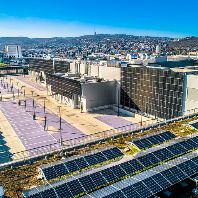New, independent research to assess the validity of current proposals for a capital charge of 25% on insurance companies' real estate investments has been commissioned by INREV, the European Association for Investors in Non-Listed Real Estate Vehicles. The research supports a capital charge of no more than 15%.
The research was carried out by Investment Property Databank (IPD) in conjunction with the CASS Business School and the University of Aberdeen. It concludes that the current Solvency II proposals do not mirror the full realities of the real estate market across Europe. In particular, the proposals consider a property market shock factor based on data from the UK commercial property market only and so provide an incomplete picture of risk.
"What this research highlights is the need for a reassessment of the property shock factor that dictates the capital charge. In its current form, the charge could end up influencing the market as opposed to reflecting its risks, which is contrary to the ambitions of Solvency II," said Matthias Thomas, CEO, INREV.
INREV has already held preliminary discussions with European policy makers regarding the research and anticipates further discussions based on the final version of the research report.
Michael Morgenroth, Chairman of INREV and Management Board Member at Gothaer Asset Management commented: "There seems to be consensus that 25% is too high and that a review of the capital charge would be useful. We welcome the opportunity to contribute to this review in whatever way we can; and we believe that the IPD research provides clear, independent evidence that the capital charge should be no more than 15%."
The research was commissioned because of a concern that if the current proposal is implemented, it could trigger a reduction in insurance companies' asset allocations to real estate. However, real estate is an important element of an insurance company's balanced and diversified investment portfolio because it has the potential to deliver competitive risk-adjusted returns together with inflation hedging characteristics for policyholders.
Independent research project
The research underpins the prudential principles of Solvency II. IPD applied enhanced valuation based indices for all European markets reported on a quarterly basis to address the issue of smoothing which is particularly prevalent in markets outside the UK. It also used a new methodology - the IPD Transaction Linked Index - to provide a better measure of volatility.
This approach took into account major differences between real estate assets, portfolios and markets and provided data across a much wider spread of geography, lease regimes and sectors, offering a more comprehensive and fairer reflection of real estate risk.
"We created 10-year quarterly indices for each of the main European property markets, which showed how, in the deepest and most closely synchronized of global economic upheavals, those markets have demonstrated three clearly distinct patterns of property investment response," said Ian Cullen, Co-founding Director, IPD.
"By adjusting the valuation based indices one step further through transaction linking - our analysis revealed patterns of extra volatility and values at risk above valuation determined levels which also vary by market and region. On the basis of these outputs, we believe the research points clearly in the direction of a need to refine the current Solvency II proposals in a way that is sensitive to the complexities of property investment practice and performance across Europe," added Ian Cullen.
In addition to reviewing the basis on which the 25% capital charge for real estate investments is based, the research examined the way in which the current Solvency II proposals reflect correlations between property and other asset classes and property and interest rates. Again, these original correlations appear heavily weighted toward the UK, making them higher than they might otherwise be.
This major research project has been led by INREV and supp















